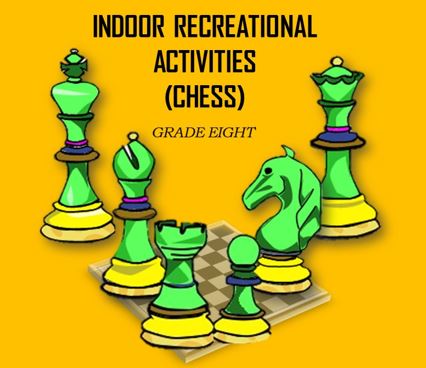
INDOOR RECREATIONAL ACTIVITIES (CHESS)
This Self Learning Module will be used by the grade eight students to identify function of each chess pieces in a chess play
This lesson focuses on the describing and identifying different techniques on how to separate mixtures using decantation, evaporation, filtering, sieving and magnet.
OBJECTIVES:
1. Identify function of each chess pieces
2. Increase and improve analytical thinking skills
3. Set up a chess board
LEARNING COMPETENCY:
Executes the skills involved in the sport; PE8GS-IIId-h-4
Displays tolerance and acceptance of individuals with varying skills and abilities: PE8PF-IIId-h-37
What to KNOW?
BRIEF HISTORY OF CHESS
One day, a man called H. J. R. Murray was keen on getting closer to the roots of the game of chess. He decided to share his discoveries with the world by writing a book “A History of Chess”, in 1913.In his book, Murray assumes that the history of chess started in the North of India, travelled to Persia, and then spread throughout the Asian continent. In the Eastern World, for example in India or Persia, chess became a part of the courtly education of the nobility. In those days words like “Shah– Persian for the king – or “Shāh Māt. the king is helpless – were used in the games. These words are very similar to the terms we use today with “check” and “checkmate”. The rules were already quite similar to the chess rules we know nowadays. Murray describes the original mold of chess, called Shatranj. Then he presents the role of medieval chess in Europe during the Middle Ages, how it travelled from the Middle East to Russia and then to Western Europe. Finally, in the third part of his book on chess history, the author arrives at the beginning of modern chess in the 19th century as we know it today.